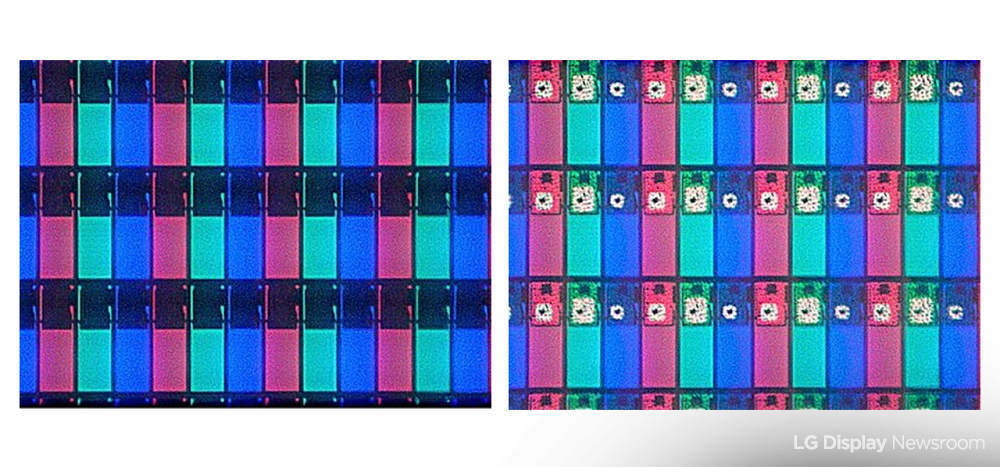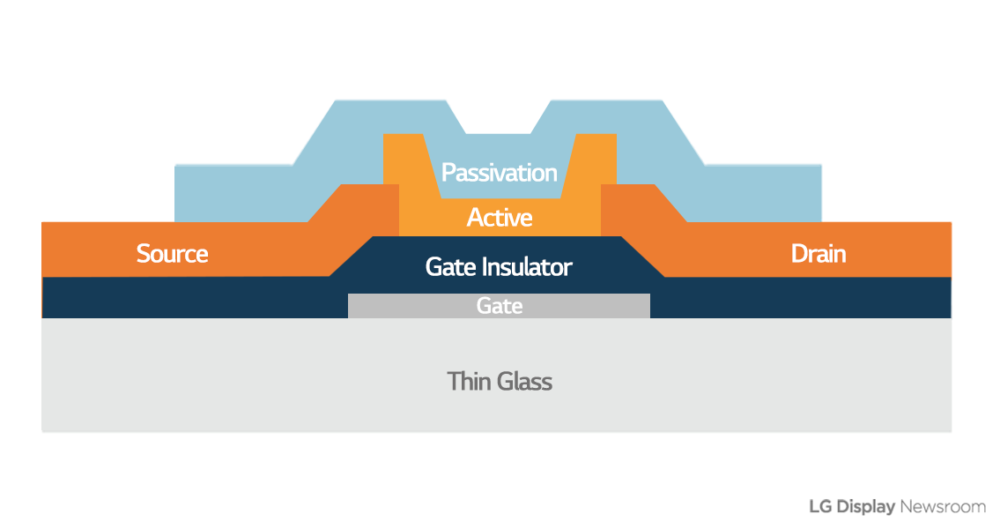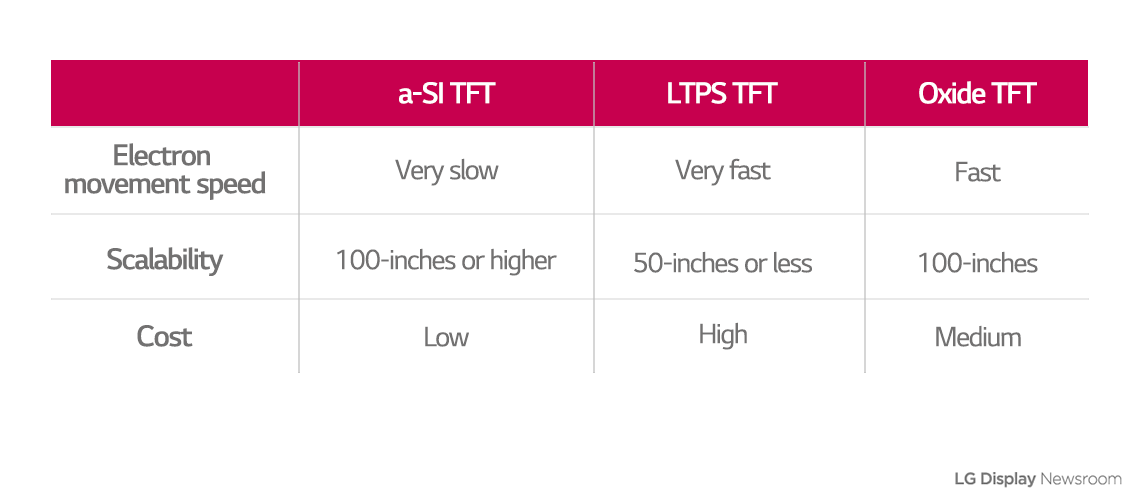DISPLAY 101
#12 Thin-Film Transistor

| Thin-Film Transistor (TFT): A semiconductor element that acts as a switch to adjust the brightness of a pixel |
The minimum unit that makes up images on a display is called a “pixel.” One pixel consists of subpixels in the colors red (R), green (G), and blue (B), and the pixel can create light of any color when different amounts of current are applied to each subpixel. A thin-film transistor controls light emissions by turning the light from each subpixel on or off.

The TFT operates very simply. First, an active layer through which the current can flow is formed on the glass substrate. Adjusting the voltage at the gate moves electrons from the source to drain through this active layer. Here the gate is responsible for regulating the current flowing through the active layer, and the source and drain exchange electrons. The current that flows in is transferred back to each subpixel, and depending on the amount of the current, the pixels can glow at different strengths.
Not all TFTs are the same!

TFTs are divided into three types, depending on the material of the layer through which the current can pass: a-SI, LTPS, and oxide.
Amorphous silicon (a–SI) TFTs were used in early LCDs. They are simple in process and high in yield, but have the disadvantage of low electron travel speed. Due to the slow movement speed, it takes a longer time to process information, so it was not possible to implement a clear screen using them.
Low-temperature polysilicon (LTPS) TFTs using polycrystalline silicon have since been developed to improve electron travel speed. Electron travel in LTPS is more than 100 times faster than in a-SI TFTs. However, the manufacturing cost is higher due to the requirement of special laser processes.
Oxide TFTs were introduced to address the high unit cost and process complexity of LTPS TFTs. Oxide TFTs use oxide instead of silicon. Electron movement speed is not as fast as LTPS TFTs, but it is still 10 times faster than in a–SI TFTs. In addition, the process is similar to that of a–SI TFTs, so it is possible to use existing facilities.









